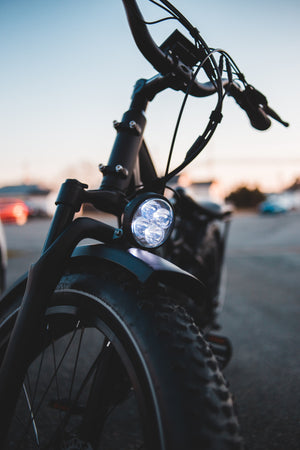✔ No Sales Tax Outside NV
✔ Bikes Arrive 90% Assembled
✔ Free Shipping To Lower 48 States On All E-Bikes
✔ We Ship From USA
✔ Safe & Secure Ordering
✔ Free Shipment Tracking
✔ Financing Available
✔ Full Manufacturer Direct Warranty
We’ve partnered with Affirm & Klarna to provide you with easy payment options at checkout, so you can buy what you want when you want. By selecting Affirm or Klarna at checkout to buy now and pay later, you are able to spread the cost of your purchase over time with convenient, stress-free payment options. Split your purchase into 4 equal payments so you can spread the cost of your purchase over time.
The speed of the e-bikes we carry ranges from 20mph to 28mph depending on Class 1, 2, or 3 and specific components of the bike; ie. size of the battery, motor, and voltage. Typically the higher wattage bikes, 500W to 750W are in the 25 to 28mph range with the motor engaged and rider pedaling.
On average, 4-6 hours to charge to 100%.
Weight capacity varies from bike to bike, so here are the approximate limits with the bikes we carry. The numbers here represent the total weight of the bike, the rider, and any cargo.
Folding Bikes - 330lbs
Step-Thru Bikes - 350lbs
Mountain Bikes (MTB) - 375lbs
Cargo Bikes - 440lbs
Please note, we would never recommend or encourage loading any of the bikes close to or beyond the listed capacities for rider safety, the structural integrity of the bike.
Yes, you can still pedal like normal and get where you need to be safe. The bike at that point becomes a conventional bike.
It really depends on your state and local laws and city ordinances pertaining to electric bikes. Most e-bikes can be ridden anywhere a traditional bicycle is allowed to ride however, the rules for roads, trails, and paths could have restrictions or limitations depending on the class of e-bikes riding on them. Click HERE to check your state and local laws to make sure no ordinances are being violated.
Class 1: Pedal Assist The electric drive system on the ebike can only be activated through a pedaling action and is limited to relatively low speeds. The sensor usually measures pedal movement, pedal-torque, or bicycle speed (sometimes all three) and sensors are located in the bottom bracket, rear hub, or rear wheel. In America, because of our more liberal vehicle definition, this class is limited to a motor-powered speed of 20 mph (32 kph) with a motor wattage of <= 750 watts. Due to the low speed of operation and required pedaling action this class should benefit from the same rights and access privileges as non-assist bicycles and should be able to be used on streets, bike lanes, multi-use bike paths, and off-road trails.
Class 2: Throttle On-Demand The electric drive system on the ebike can be activated through a throttle element such as a grip-twist, trigger or button and is limited to low speeds. The motor system may also be activated through a pedaling action as with Class 1. In America, this class is currently less restricted and therefore more common. The top speed is limited to 20 mph (32 kph) with a motor wattage of <= 750 watts as with Class 1. Due to the low speed of operation without the required pedaling action, this class may be a bit more restricted but still benefit from the same rights and access privileges on paved surfaces as non-assist bicycles and should be able to be used on streets, bike lanes, and multi-use bike paths.
Class 3: Speed Pedelec The electric drive system on the ebike can be activated through a pedaling action to reach higher top speeds. In America, this class is often combined with Class 2 which produces bikes that have a throttle element capable of powering the rider up to 20 mph (32 kph) on motor power only, as well as a pedal-assist mechanism capable of powering the rider up to 28 mph (45 kph).
Class 4: Moped or Motorcycle The electric drive system can be activated through a pedaling action or throttle. The top speed is above 28 mph (45 kph) and/or the motor wattage may be greater than 750 watts. In all major geographies, this class would be considered a motor vehicle that requires licensing and registration and is limited to certain motorized off-road trails or traditional roads. There has been some confusion in America where machines that resemble bicycles (having pedals) that are capable of high speed and power are used inappropriately without licensing or insurance and on infrastructure reserved for bicycles such as paths and mountain bike trails. This behavior is subject to the same legal action as driving a gas-powered motorcycle or car and may result in severe legal ramifications.
Taking care of your e-bike is very similar to a normal bike. Mainly you need to keep your chain lubed and check the inflation of your tires every 30 days. You can clean your bike like normal but just take care when cleaning any electric parts as they are water-resistant and not waterproof.
The range on most is anywhere from 15-30 miles and that depends on the conditions, like hills, headwinds, battery condition, etc, how much pedaling you are doing, the weight of the rider, and any cargo. The MPG in your car is directly affected by conditions, traffic, your driving style, etc. E-bikes are really no different.

